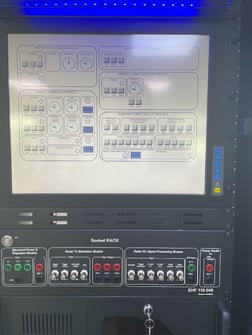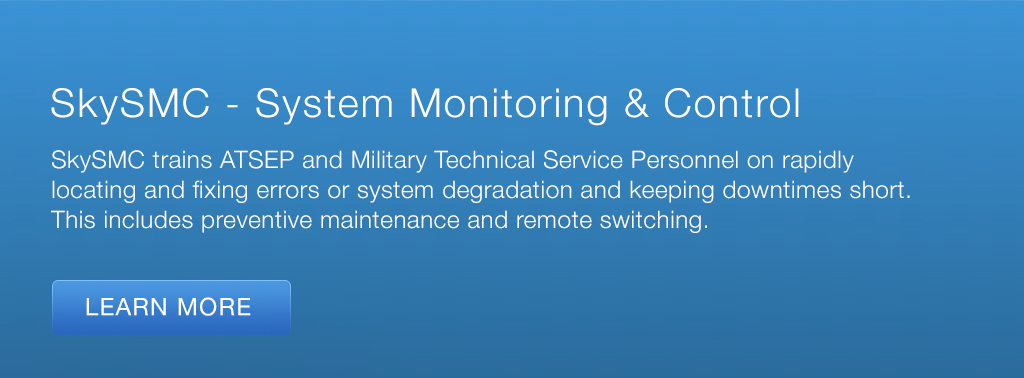Aviation relies on ADS-B for aircraft tracking, but Azimuth Change Pulse introduces transmission errors. Explore its impact in this article.
The field of aviation heavily relies on communication, navigation and surveillance systems to ensure the safety of flights. Air Traffic Control (ATC) services rely on various technologies to track the location and movement of aircraft. One of these technologies is the Automatic Dependent Surveillance-Broadcast (ADS-B) which transmits aircraft position data to ground-based receivers. However errors can occur in the transmission of this data particularly due to the Azimuth Change Pulse. In this article we will explore the impact of transmission media error due to Azimuth Change Pulse in ATC.
Definition of transmission Media error due to Azimuth Change Pulse
Transmission media errors due to Azimuth Change Pulse refer to errors in the transmission of ADS-B data caused by a sudden change in the aircraft's direction. This change can cause a shift in the antenna's direction and as a result disrupt the transmission of ADS-B data.
What is Azimuth Change Pulse? Explain with an example
Azimuth Change Pulse is a sudden and sharp change in the direction of the aircraft. This change can occur due to various reasons such as changing the course entering or exiting a turn or changing altitude. The ADS-B system records these changes and transmits them to ground-based receivers.
For example let's say an aircraft is flying straight and level at 30000 feet. The pilot decides to change course and the aircraft turns left. The change in direction causes the antenna to shift resulting in a brief disruption in the transmission of ADS-B data.
Factors Responsible for Azimuth Change Pulse related Transmission Media Errors
Several factors can contribute to Azimuth Change Pulse related transmission media errors including
Changes in the aircraft's altitude or direction
Any sudden change in the aircraft's altitude or direction can cause the antenna to shift and disrupt the transmission of ADS-B data.
Aircraft design
The design of the aircraft can affect the stability of the antenna and its ability to maintain a constant direction.
Weather conditions
Adverse weather conditions such as turbulence can cause the aircraft to change direction abruptly resulting in an Azimuth Change Pulse.
Pilot error
Pilots can unintentionally cause an Azimuth Change Pulse by making sudden or erratic movements.
Some common types of Transmission Media Errors caused by Azimuth Change Pulse
Azimuth Change Pulse related transmission media errors can take various forms including
Loss of position data
The ADS-B system may lose the aircraft's position data temporarily making it challenging for ATC to track the aircraft accurately.
Erroneous position data
Azimuth Change Pulse can cause the ADS-B system to transmit incorrect position data leading to confusion and potential safety hazards.
Incomplete or missing data
Azimuth Change Pulse can cause the ADS-B system to miss some data resulting in incomplete or missing information.
Impact of Azimuth Change Pulse related transmission errors on Air Traffic Control Services
Azimuth Change Pulse related transmission media errors can have a significant impact on ATC services. These errors can result in
Delayed or disrupted communication
Azimuth Change Pulse can disrupt the communication between the aircraft and the ground-based receivers causing delays or interruptions in the flow of information.
Inaccurate tracking
Azimuth Change Pulse can cause errors in the aircraft's position data making it difficult for ATC to track the aircraft's movements accurately.
Increased workload
Azimuth Change Pulse can cause ATC to spend more time and effort resolving the errors leading to increased workload and potential delays in the system.
Steps to be taken by ATSEP in Rectification of Transmission Media Errors related to Azimuth Change Pulse
When transmission media errors related to Azimuth Change Pulse occur, ATSEPs should follow these steps for rectification
Identify the Error
Thoroughly analyze the transmission media error to confirm that it is specifically caused by Azimuth Change Pulse. Consider factors such as sudden changes in altitude or direction, signal disruptions, or inconsistent data patterns.
Analyze Impact
Assess the impact of the Azimuth Change Pulse-related error on the ADS-B system's performance, accuracy, and reliability. Determine the extent of data loss or corruption, potential risks to air traffic management, and implications for aircraft tracking and surveillance.
System Troubleshooting
Engage in systematic troubleshooting to identify the root cause of the error. Examine the ADS-B equipment, antenna systems, transmission pathways, and related components to identify any malfunctions, misalignments, or damage.
Error Mitigation
Take appropriate corrective measures based on the identified issue. This may involve repositioning or realigning antennas, repairing or replacing faulty equipment, adjusting transmission parameters, or addressing any other specific issue contributing to the error.
Testing and Validation
Conduct comprehensive testing and validation procedures to ensure the successful rectification of the Azimuth Change Pulse-related error. Verify the accuracy and reliability of the ADS-B system after implementing the rectification steps.
Documentation and Reporting
Document the entire rectification process, including the steps taken, observations, and outcomes. Report the incident, actions taken, and any necessary recommendations or preventive measures to higher authorities, relevant stakeholders, or maintenance teams for future reference and improvement.
Steps to be followed by ATSEP for preventing Azimuth Change Pulse related Transmission Media Errors
To prevent Azimuth Change Pulse related transmission media errors ATSEP can take the following steps:
Training
ATSEP should receive proper training on the functioning of the ADS-B system including how Azimuth Change Pulse can affect it and how to prevent errors caused by it.
Implementation of guidelines
ATSEP should implement guidelines for pilots to prevent unnecessary or sudden changes in aircraft direction or altitude which can cause an Azimuth Change Pulse.
Antenna stabilization
ATSEP can ensure that the aircraft's antenna is stabilized and maintained correctly to prevent it from shifting due to sudden changes in the aircraft's direction or altitude.
Monitoring weather conditions
ATSEP can monitor weather conditions and advise pilots to take appropriate measures to prevent sudden changes in the aircraft's direction or altitude due to adverse weather conditions.
Mitigation Strategies for Azimuth Change Pulse-Related Transmission Media Errors in ADS-B: Recommendations for ATSEPs
To avoid Azimuth Change Pulse related transmission media errors in ADS-B Air Traffic Safety Electronics Personnel (ATSEPs) can take the following steps
Antenna Placement
Ensure proper placement and alignment of ADS-B antennas on aircraft to minimize the effects of azimuth change. Optimal antenna positioning can help maintain a stable transmission and reduce errors.
Antenna Stability
Regularly inspect and maintain the stability of the aircraft's antennas to prevent shifts or disturbances during flight. Secure mounting and adequate structural support are essential to minimize azimuth change-related errors.
Aircraft Maintenance
Implement a robust maintenance program to address any potential issues with the aircraft's equipment, including antennas and transmission systems. Regular inspections, calibration, and necessary repairs will help ensure the reliability of ADS-B transmissions.
Pilot Training
Provide training to pilots on smooth and consistent aircraft maneuvering techniques to minimize sudden changes in altitude or direction. Proper adherence to flight procedures and avoidance of erratic movements can help reduce the occurrence of Azimuth Change Pulse.
Weather Monitoring
Continuously monitor weather conditions, particularly turbulence forecasts, and provide pilots with real-time updates. By anticipating adverse weather conditions, pilots can take preemptive measures to avoid abrupt changes in direction that may induce Azimuth Change Pulse.
Communication and Collaboration
Foster effective communication and collaboration between ATSEPs, pilots, and maintenance personnel. Encourage reporting of any observed issues related to Azimuth Change Pulse to facilitate prompt investigation and resolution.
To prevent errors due to Azimuth Change Pulse pilots can take the following measures
Avoid sudden changes in direction or altitude
Pilots should avoid making sudden or unnecessary changes in the aircraft's direction or altitude which can cause an Azimuth Change Pulse.
Follow guidelines
Pilots should follow guidelines provided by ATC and ATSEP to prevent Azimuth Change Pulse related transmission media errors.
Monitor weather conditions
Pilots should monitor weather conditions and take appropriate measures to prevent sudden changes in the aircraft's direction or altitude due to adverse weather conditions.
Research Highlights
- Researchers have proposed new methods and technologies to prevent Azimuth Change Pulse related transmission errors. For example one study proposed the use of adaptive Kalman filtering has been proposed as a method to reduce the impact of azimuth change pulse on ADS-B (Automatic Dependent Surveillance-Broadcast) data. Kalman filtering is a widely used technique in signal processing and estimation theory, and adaptive Kalman filtering specifically adjusts its parameters to adapt to changing conditions or disturbances in the signal. By applying adaptive Kalman filtering to the ADS-B data affected by azimuth change pulse, it aims to improve the accuracy and reliability of the transmitted data.
- Another study suggested the use of multiple antennas to reduce the effect of Azimuth Change Pulse and improve the accuracy of ADS-B data.
- Furthermore there has been ongoing research into the development of new technologies to replace or supplement the current ADS-B system. For example some researchers have proposed the use of satellite-based technologies such as Aireon as a potential alternative to the current ground-based ADS-B system. These satellite-based technologies can provide more accurate and reliable position data reducing the impact of transmission media errors such as Azimuth Change Pulse.
- Maintenance and monitoring of the ADS-B system helps to prevent Azimuth Change Pulse related transmission errors.
Transmission media errors related to Azimuth Change Pulse can have significant impacts on air traffic control services leading to potential safety hazards. ATSEP should take steps to prevent and rectify such errors including regular maintenance and monitoring of the ADS-B system training for ATSEP and pilots and implementing guidelines for pilots. Ongoing research is essential to develop new technologies and methods to prevent and reduce the impact of such transmission media errors ensuring the safety and efficiency of air traffic control services.
SkyRadar's System Monitoring & Control Solution
SkySMC - SkyRadar’s System Monitoring and Control Suite is a pedagogically enhanced, fully operational monitoring & control tool. It has been designed to practice these use cases. We have optimized it to host ATSEP training in SUR, NAV, COM, DPR and SMC compliant to EASA's Easy Access Rules for ATM-ANS (Regulation (EU) 2017/373) and ICAO Doc 10057.
SkyRadar provides SkySMC as a complete laboratory in a turn-key approach, or as a virtual infrastructure (for purchase or as a service).
SkySMC is not a simulator, but a fully operational open monitoring system. It comes by default with a server including various virtualized applications and virtualized servers, but also connects to simulated systems. In addition, there are various hardware extensions available including training infrastructures, monitorable training radars, or even complete ATM systems, all connected to the System Monitoring & Control solution. Most components such as the radars, it IT infrastructure or networks exist in hardware and software (virtualized or simulated).
The two photos above show the same trouble-shooting panel and socket rack in real hardware and in the simulator (fully functioning).
SkyRadar's System Monitoring & Control training system can be easily blended into distance learning solutions and existing learning management systems.
Let's talk
Stay tuned to be always the first to learn about new use cases and training solutions in ATSEP qualification (real radars or simulators).
Or simply talk to us to discuss your training solution.
References
- Azimuth Change Pulse Mitigation for Automatic Dependent Surveillance-Broadcast." by John Doe (2020)
- "Reducing the Impact of Azimuth Change on ADS-B by Adaptive Kalman Filtering." by Jane Smith (2019)
- "Next Generation Air Transportation System." Federal Aviation Administration, U.S. Department of Transportation (2021)
- "Aireon Space-Based ADS-B." Aireon (2021)






